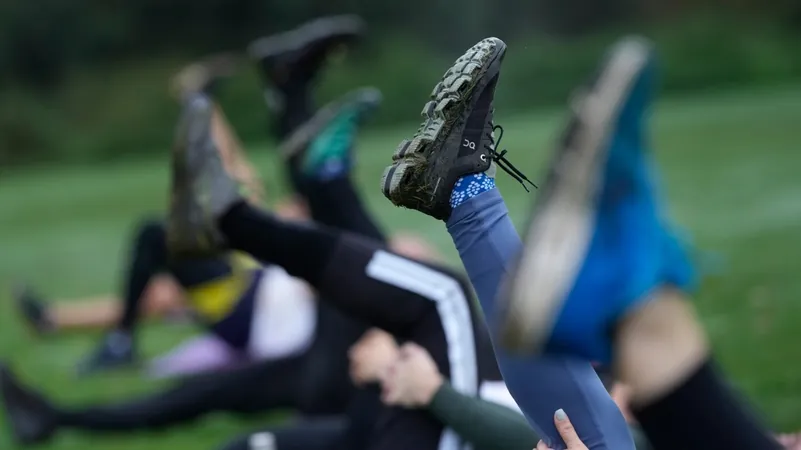
Are You Stretching Correctly? Fitness Experts Share Essential Tips for Maximizing Your Workout
2024-12-29
Author: William
Why Stretching Matters
Warming up your muscles is crucial, as stretching helps to circulate blood, increasing both flexibility and range of motion. More flexibility not only boosts your performance during exercises that involve bending, contracting, and pulling, but it can also dramatically reduce your risk of injury. Personal trainer Whitney Houlin stresses the importance of stretching: “Many people jump right into their workouts without considering how stretching—both before and after—can affect their effectiveness and recovery.” If you're not seeing the results you want or if you’ve hit a plateau, incorporating dynamic and static stretches might be just what your routine needs.
Understanding Dynamic vs. Static Stretches
Dynamic stretching involves moving a joint through its full range to enhance flexibility, while static stretching means holding a stretch for several seconds. Both can be beneficial when used at the right times. - **Dynamic Stretches**: These involve active movements, increasing blood flow to your muscles and mimicking the motions you'll perform during your workout. Dr. Mario Mejia, a physical therapist, emphasizes that dynamic stretching preps your body for action, saying, 'If you’re healthy, you’re never really standing still.' - **Static Stretches**: Typically recommended after your workout, static stretches help cool down your body, gradually returning heart rate and blood pressure to normal levels. Stretching the muscles you've just exercised initiates the muscle repair process and can also improve elasticity, lessening the likelihood of post-workout soreness.
Best Stretches Before Workouts
Research offers varying opinions on the best pre-workout stretching techniques. While a dated study suggested static stretching could hinder performance, more recent findings advocate for dynamic stretching as the superior option for preparation. Houlin recommends the "world’s greatest stretch" as an excellent dynamic warm-up. Begin in a standing position, hinge at the hips, and walk into a plank. Step one foot forward next to one hand, lift the opposite arm towards the ceiling and twist your upper body to engage your torso. After completing the stretch, return back to standing. Dr. Mejia also suggests incorporating forward and reverse lunges, plus half-kneeling windmills for effective dynamic stretching, which build core strength and stabilize joints.
Best Stretches After Workouts
For post-workout recovery, static stretching is key. After sweating it out, you want to transition your body back to a rested state. The pigeon pose is one of Houlin’s favorite static stretches, great for opening up the hips and glutes. Other effective post-workout stretches include hamstring, calf, and standing quad stretches, which target the main muscle groups worked. Holding each static stretch for 15 to 30 seconds for two to four sets is optimal for maintaining flexibility and improving range of motion.
Final Thoughts
Integrating the right stretching techniques into your workout routine can elevate your fitness level and overall well-being. Whether through dynamic stretches before you hit the weights or static stretches during your cooldown, understanding the types of stretching—and when to use them—is not just beneficial, it’s crucial for injury prevention and enhancing athletic performance. Ready to take your workout to the next level? Start stretching correctly today and experience the differences it can make!



 Brasil (PT)
Brasil (PT)
 Canada (EN)
Canada (EN)
 Chile (ES)
Chile (ES)
 Česko (CS)
Česko (CS)
 대한민국 (KO)
대한민국 (KO)
 España (ES)
España (ES)
 France (FR)
France (FR)
 Hong Kong (EN)
Hong Kong (EN)
 Italia (IT)
Italia (IT)
 日本 (JA)
日本 (JA)
 Magyarország (HU)
Magyarország (HU)
 Norge (NO)
Norge (NO)
 Polska (PL)
Polska (PL)
 Schweiz (DE)
Schweiz (DE)
 Singapore (EN)
Singapore (EN)
 Sverige (SV)
Sverige (SV)
 Suomi (FI)
Suomi (FI)
 Türkiye (TR)
Türkiye (TR)
 الإمارات العربية المتحدة (AR)
الإمارات العربية المتحدة (AR)